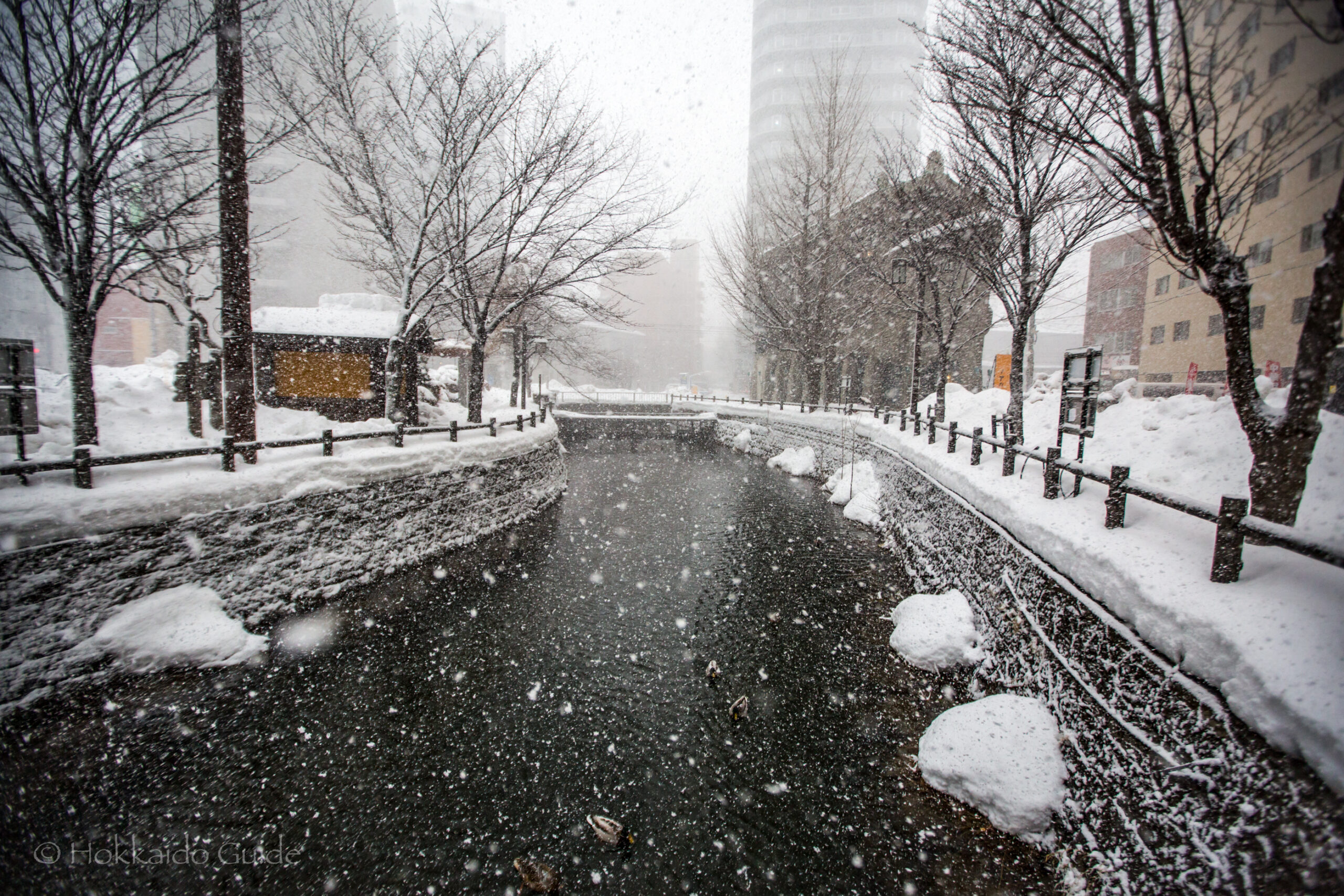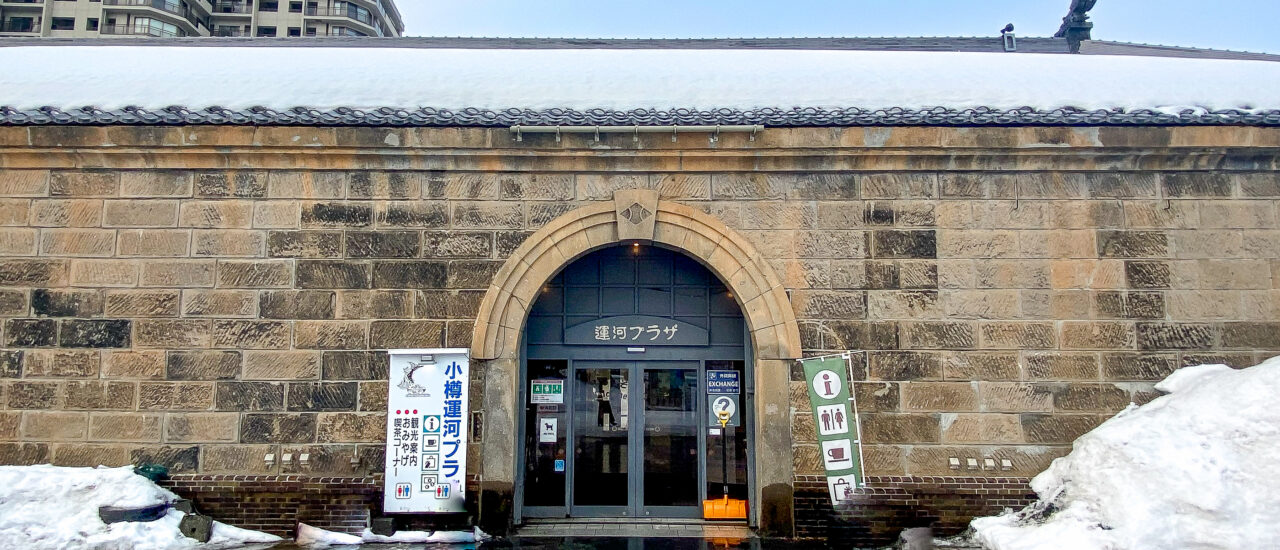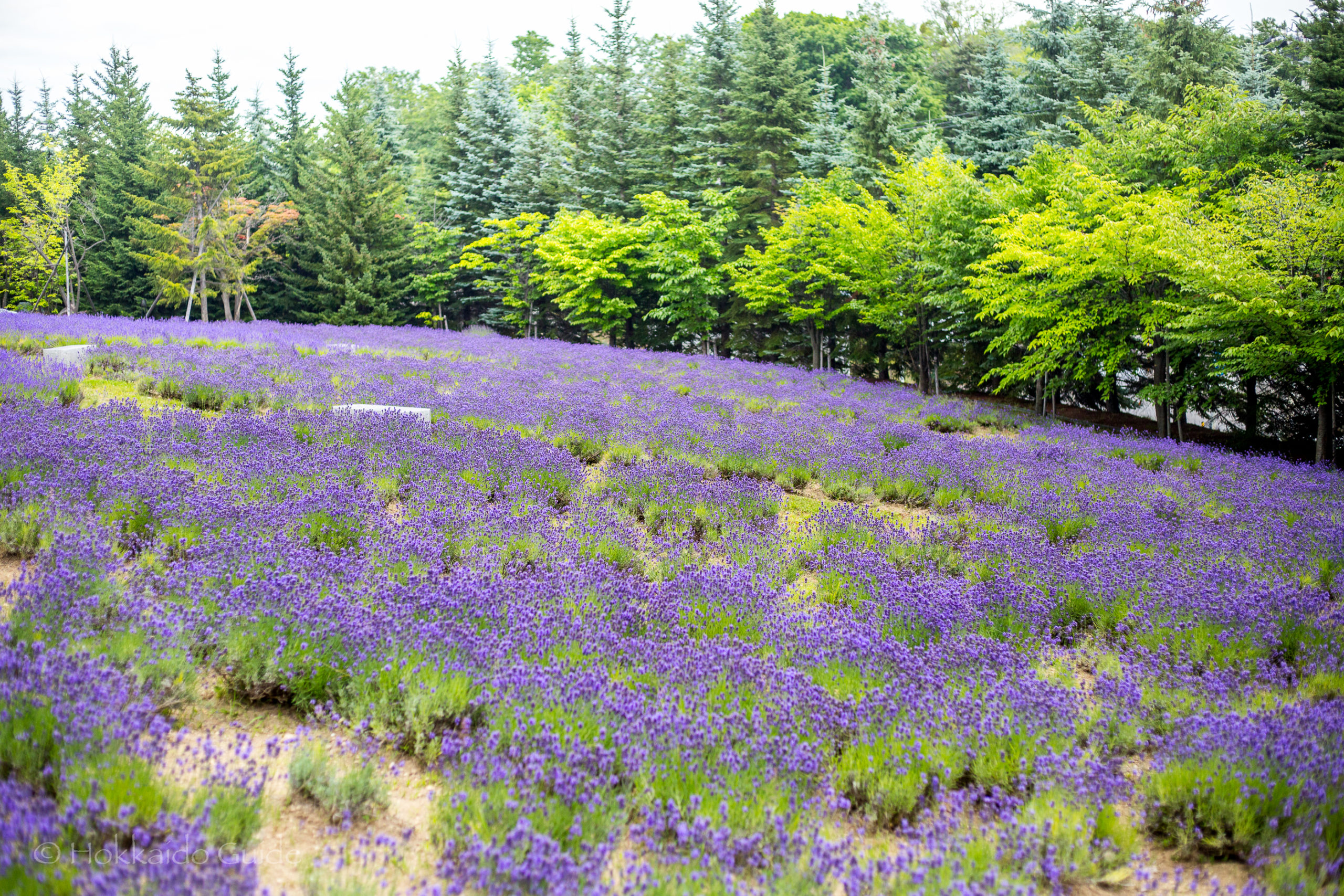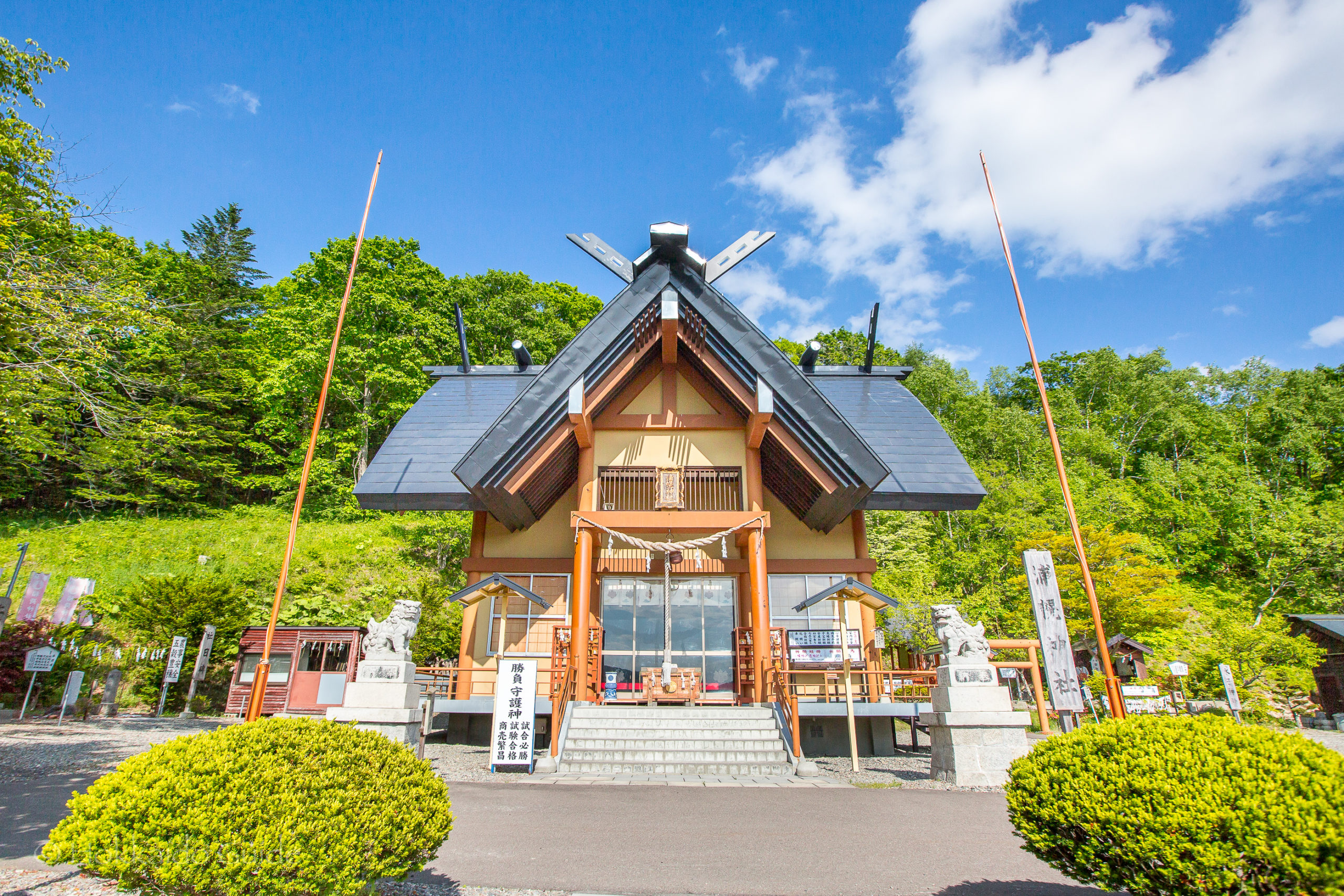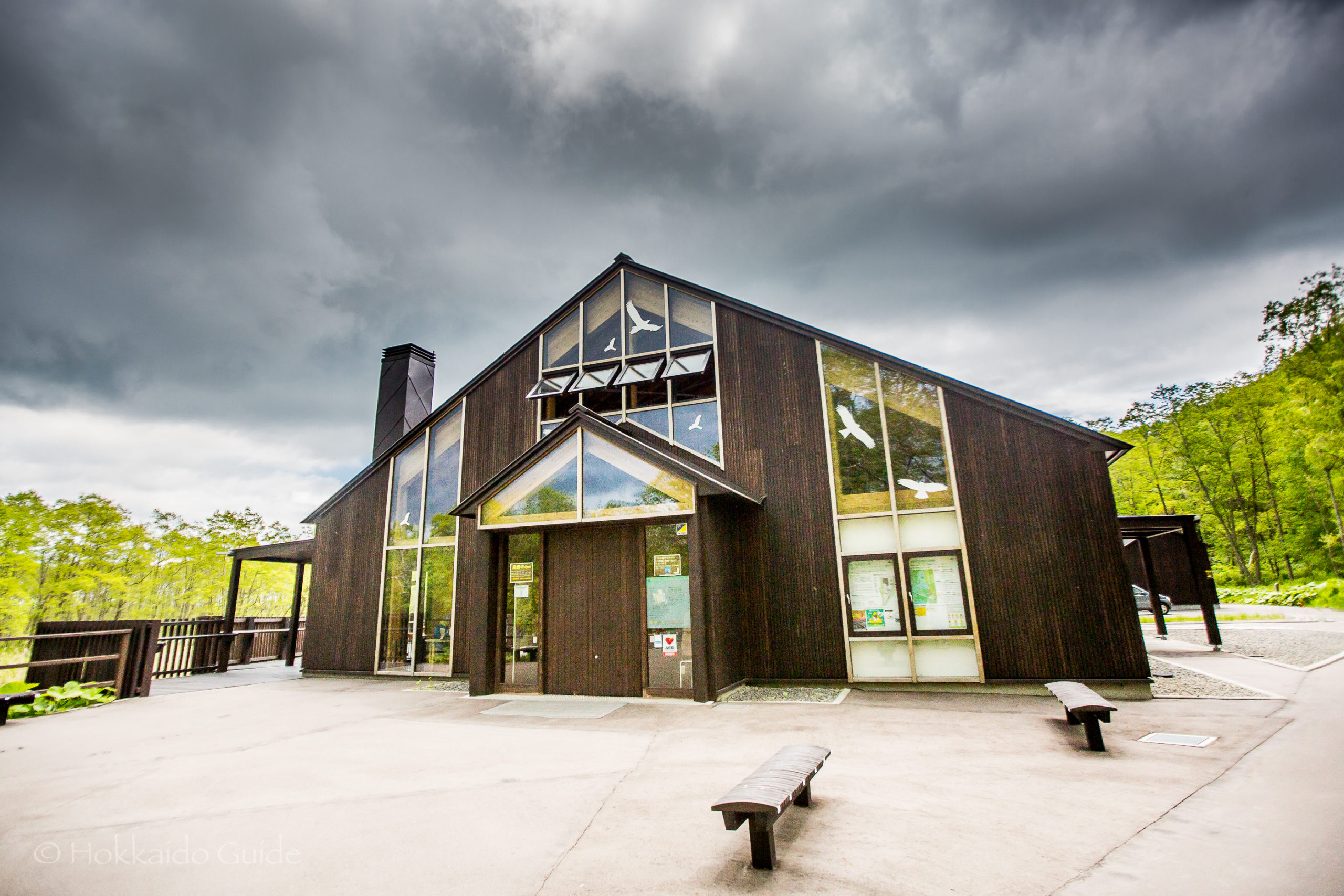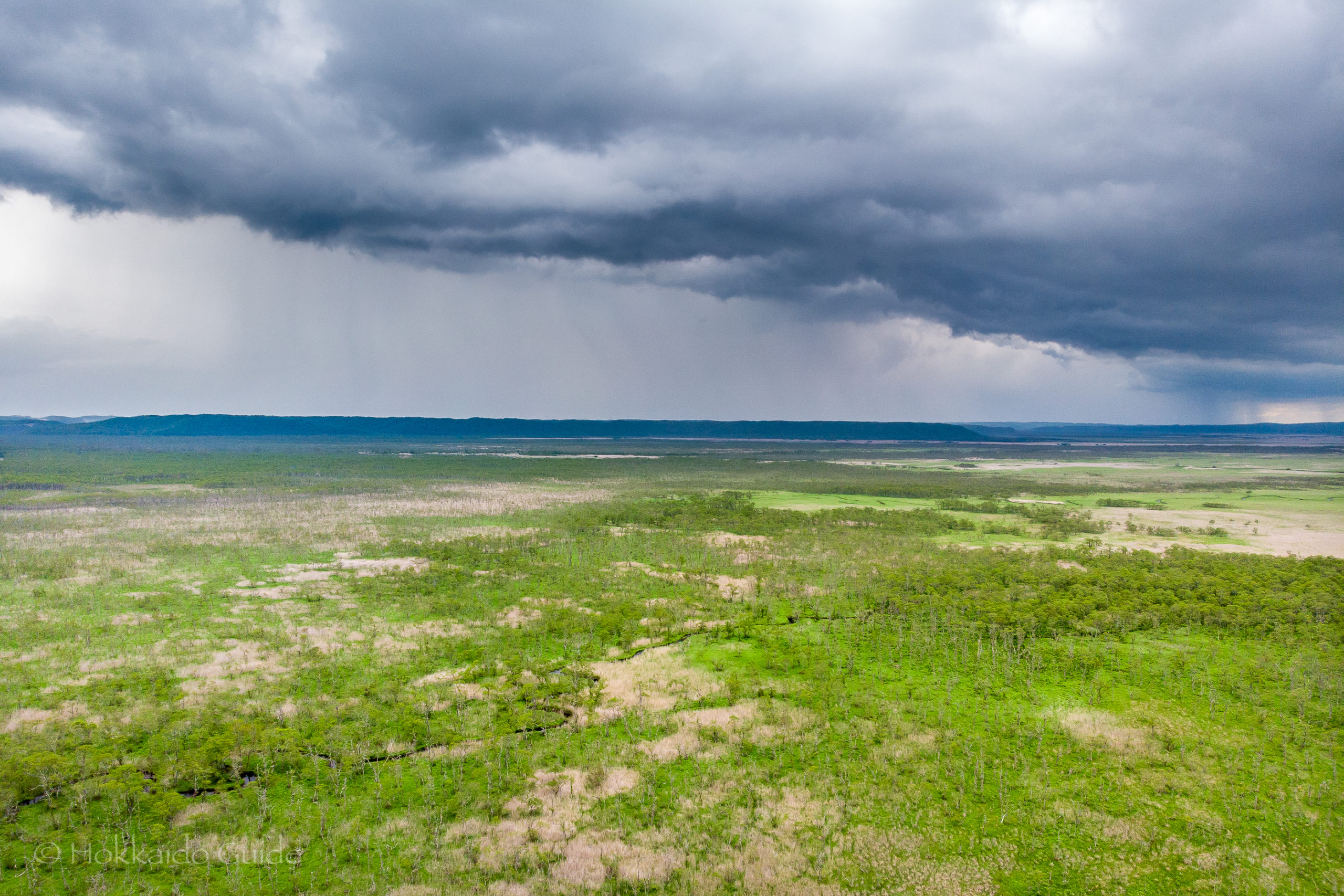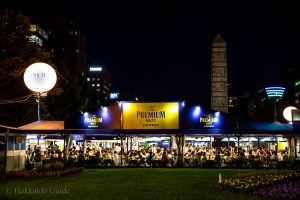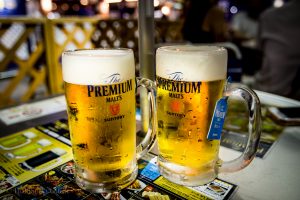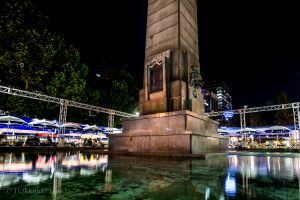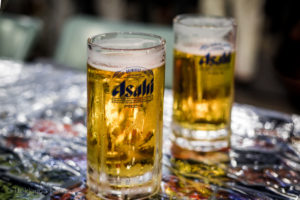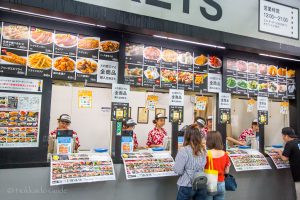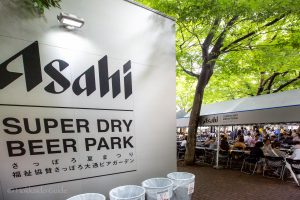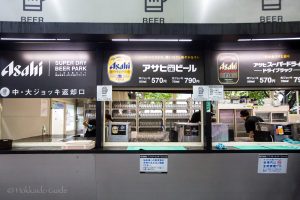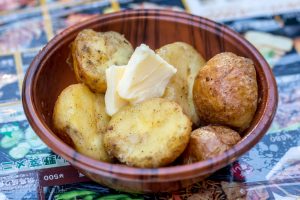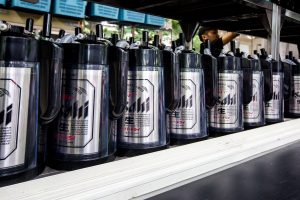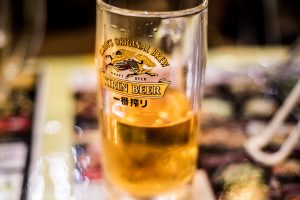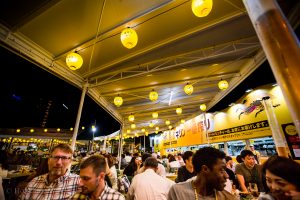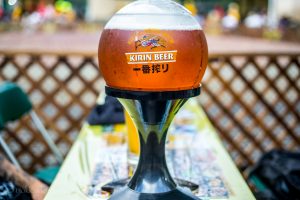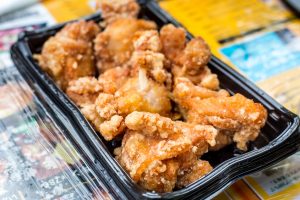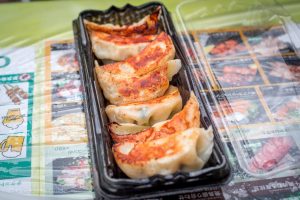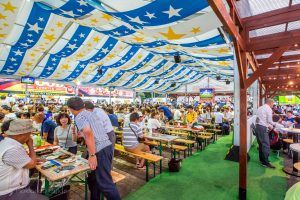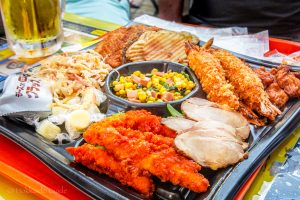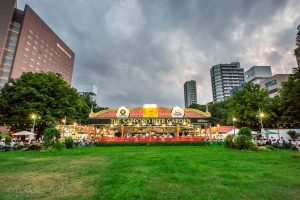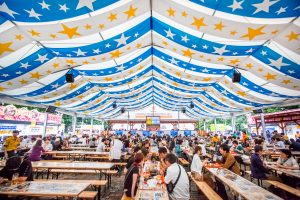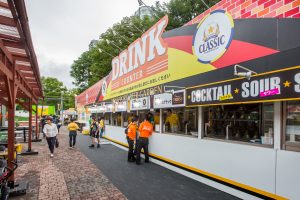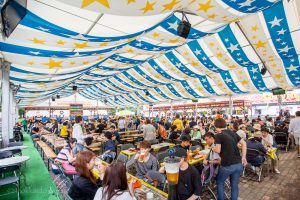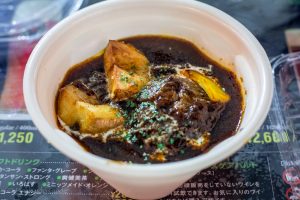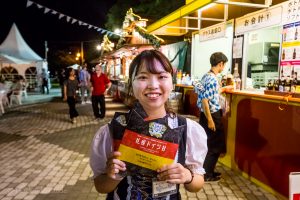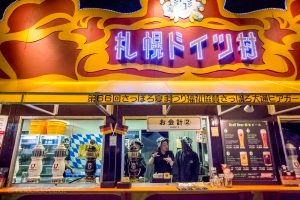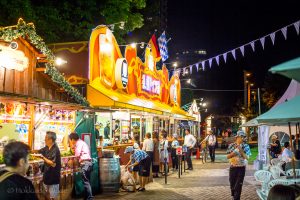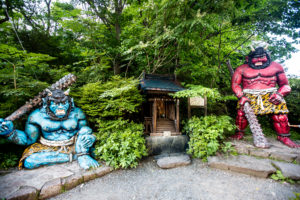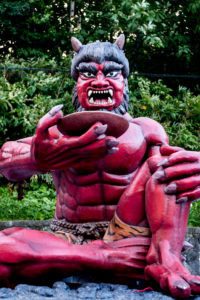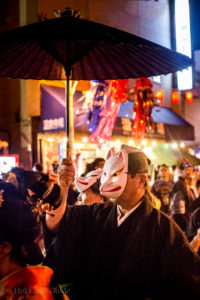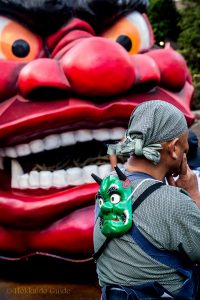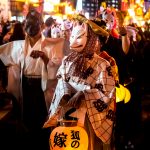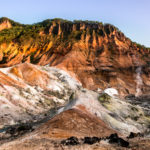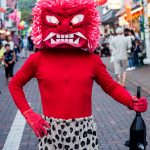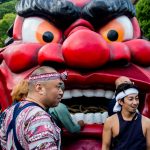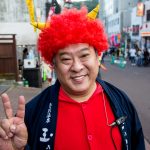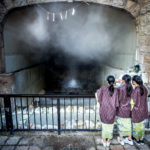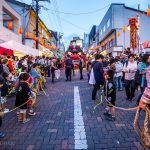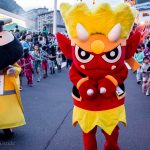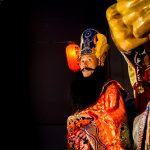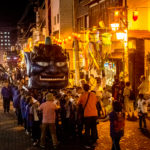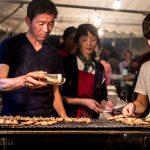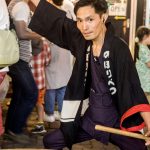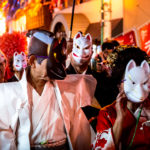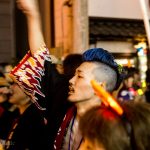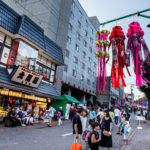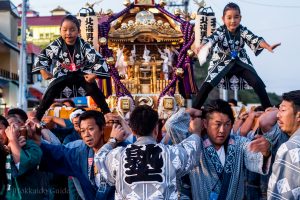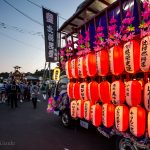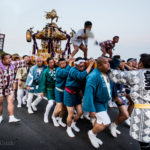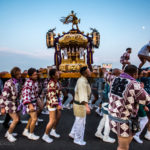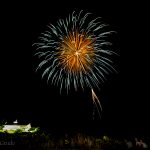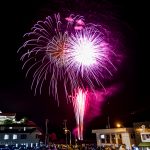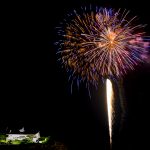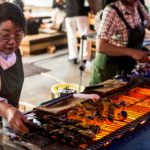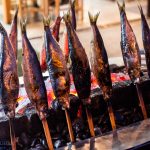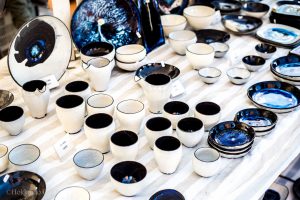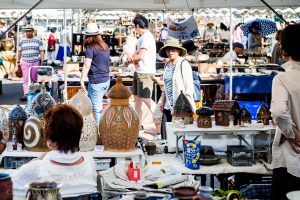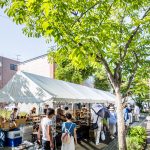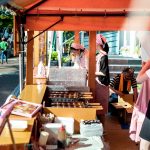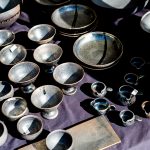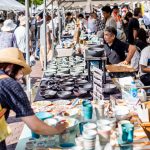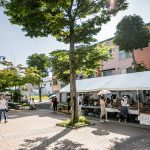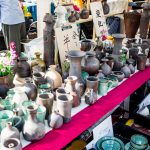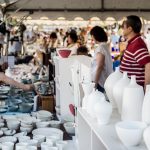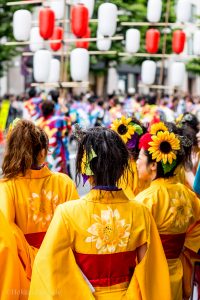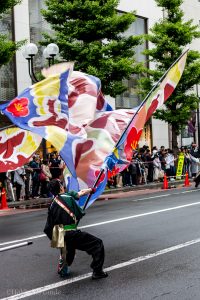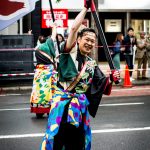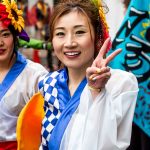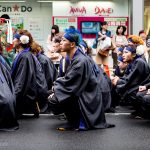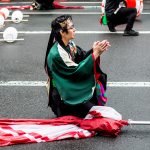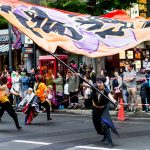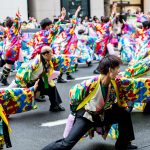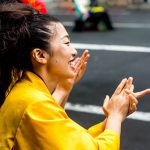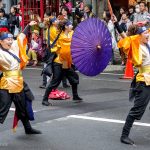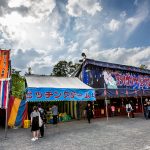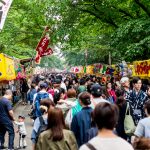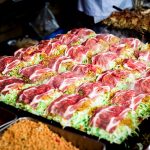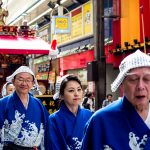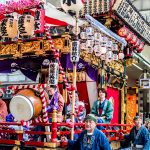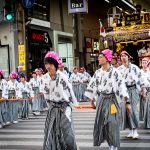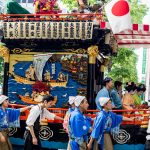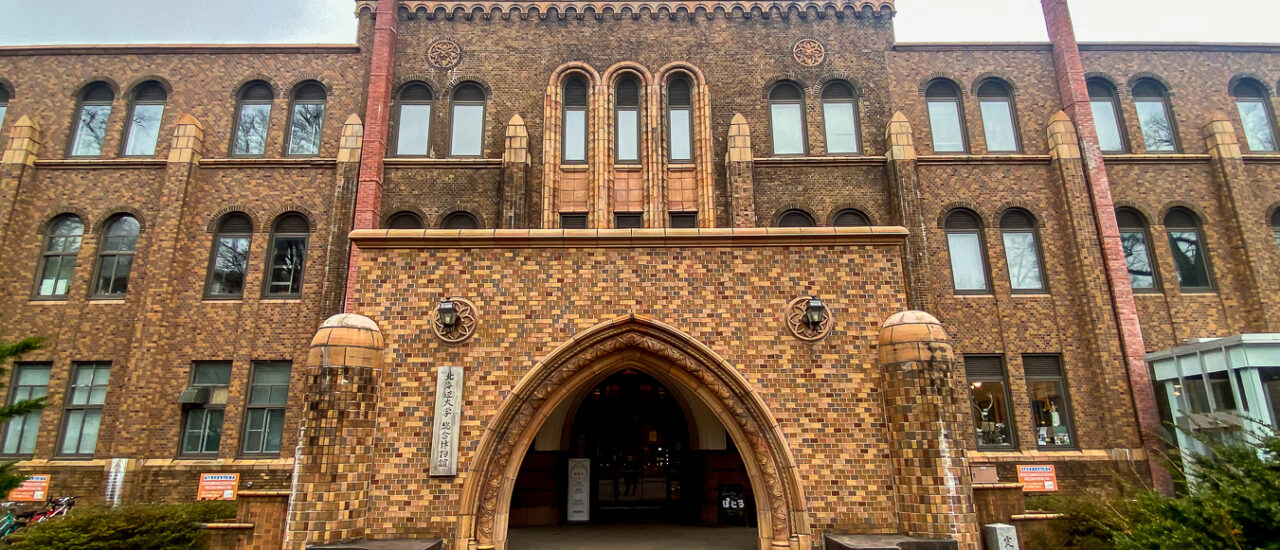
Category: Festivals / Events
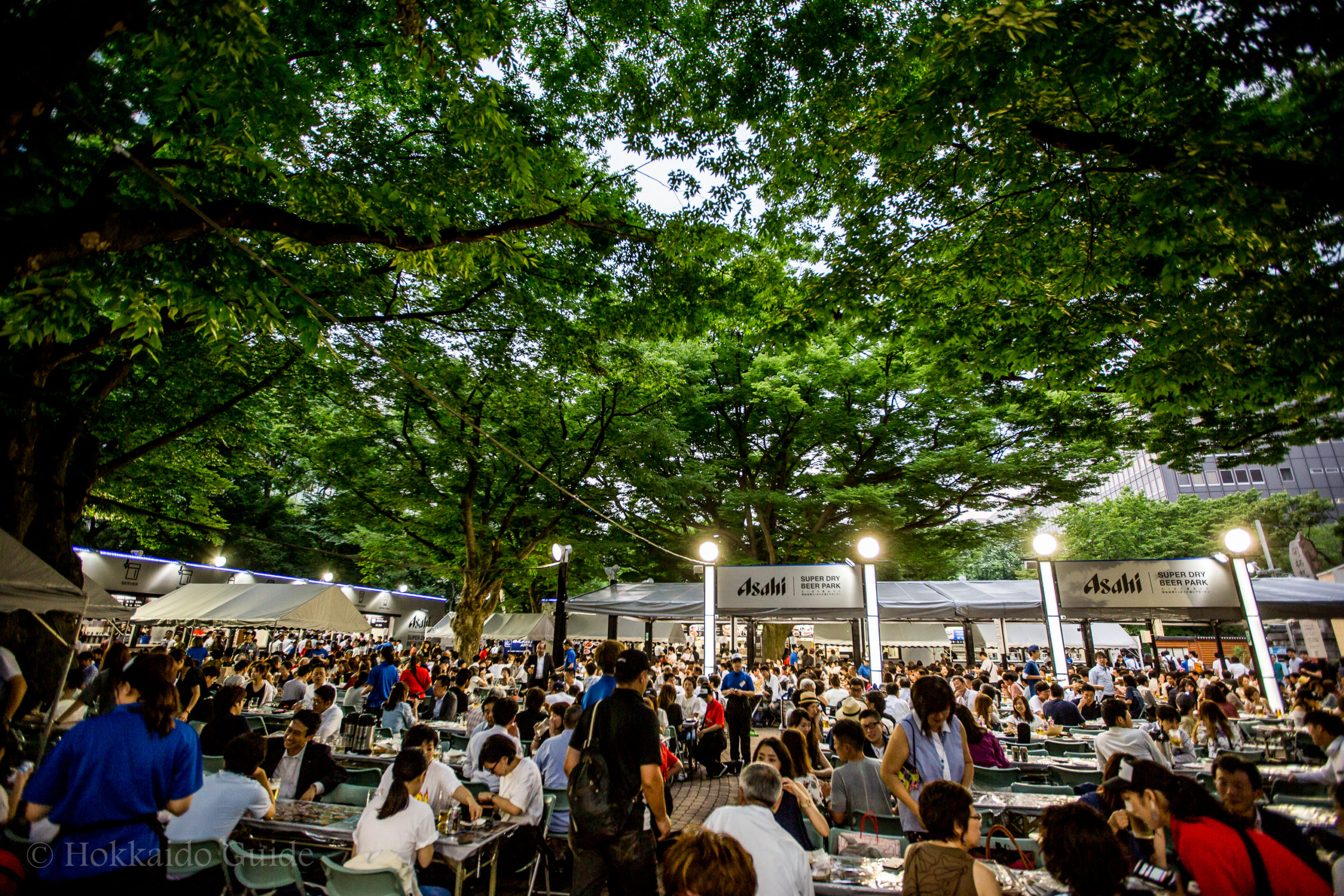
Sapporo Odori Beer Garden
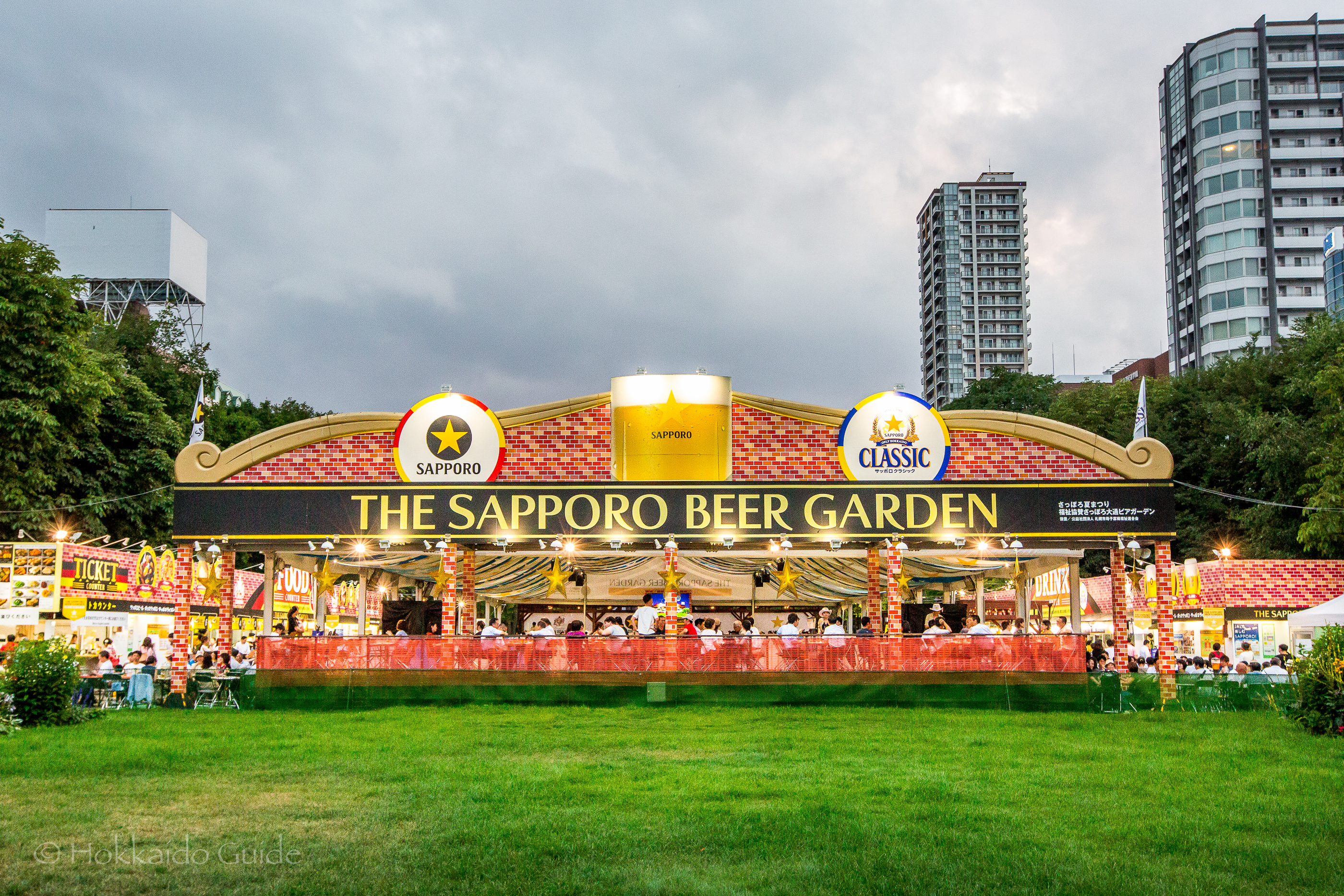
| Dates | Mid July to Mid August (1 month) |
| Opening Hours | 12:00 - 21:00 (last order is at 20:30) |
| Contact | 011-281-6400 |
| Location / Getting There | Odori park. Odori-nishi 5-chome to 11-chome, Chuo-ku, Sapporo 1 minute from Odori subway station |
The winters are long in Sapporo, so when summer finally arrives, people love getting out to the summer festivals and events. And the beer garden is no exception! The Odori Beer Garden is the biggest event in summer, and the biggest beer garden in Japan! Since its beginning in 1959 the beer garden runs for a month. Located in the heart of Sapporo, the beer garden takes up 6 blocks, runs over half a kilometer and seats up to 13,000 people!
[the_ad id=”4264″]
Each venue is run by each of Japans leading brewers, so you can enjoy your favorite beer! Each venue offers seating with tables, standing-only spaces, as well as tables under a roof cover, it gets busy so be sure to get there early! Reserved seats are possible. Food is also available to buy. To buy a beer, you need to purchase a ticket then give the ticket to one of the friendly staff. Enjoy! The Odori Sapporo Beer Garden is broken up into the following venues:
5 Chome Venue: Suntory Beer “The Premium Malt’s Garden”
| Opening Hours | 12:00 - 21:00 (last order is at 20:30) |
| Contact | 011-222-8188 011-222-5122 (reservations) |
Located on the 5th block west, Suntory has nice seating around the fountain. Non smoking seats are available. There are 160, all weather seats, and stand-up drinking space. Plus the Suntory beer, you can enjoy a 10-liter refrigerated pitcher and Suntory’s Kaku highballs.
6 Chome Venue: Asahi Beer “Asahi Super Dry Beer Park”
| Opening Hours | 12:00 - 21:00 (last order is at 20:30) |
| Contact | 011-210-6990 |
6th block west, at Asahi you can enjoy sitting under the overhanging trees and enjoy your beer. Asahi has an English menu and as with Suntory, it has plenty of seating. Asahi also has Super Dry chilled to below zero degree at the popular Extra Cold bar.
7 Chome Venue: Kirin Beer “Kirin Yoroko Beer Garden”
| Opening Hours | 12:00 - 21:00 (last order is at 20:30) |
| Contact | 011-518-8010 |
7th block west is the Kirin beer garden, with plenty of undercover seating. Kirin has 3 litre beer tubs, or the mighty 6 litre towers that are a popular choice. You can also enjoy the Kirin Ichiban Shibori frozen draft beer. Reservations are possible, stand-up drinking space available.
8 Chome Venue: Sapporo Beer “The Sapporo Beer Garden”
| Opening Hours | 12:00 - 21:00 (last order is at 20:30) |
| Contact | 011-233-3305 |
On the 8th block west and underneath the largest tent out of the whole event, lies the Sapporo beer venue. You can can enjoy draft beer direct from the factory, as well as the “Classic Furano Citrus” exclusive to the venue.
10 Chome Venue: “World Beer Plaza”
| Opening Hours | Weekdays: 12:00 - 21:00 (last order is at 20:30) Weekends: 16:00 - 21:00 (last order is at 20:30) |
| Contact | 080-1972-6336 |
10th block west on Odori park will see you at the world beer plaza. Here you will find a variety of overseas draft beers such as Guinness, Lowenbrau, and Carlsberg, just to name a few. The perfect opportunity to try out some new ales!
11 Chome Venue: “Sapporo German Village”
| Opening Hours | Weekdays: 12:00 - 21:00 (last order is at 20:30) |
Last but not least on the 11th block west is the Sapporo German village. Enjoy authentic draft beer brought in directly from Germany. You can also savor German cuisine and happy hours from noon until 4 o’clock in the evening on weekdays. Reservations are available.
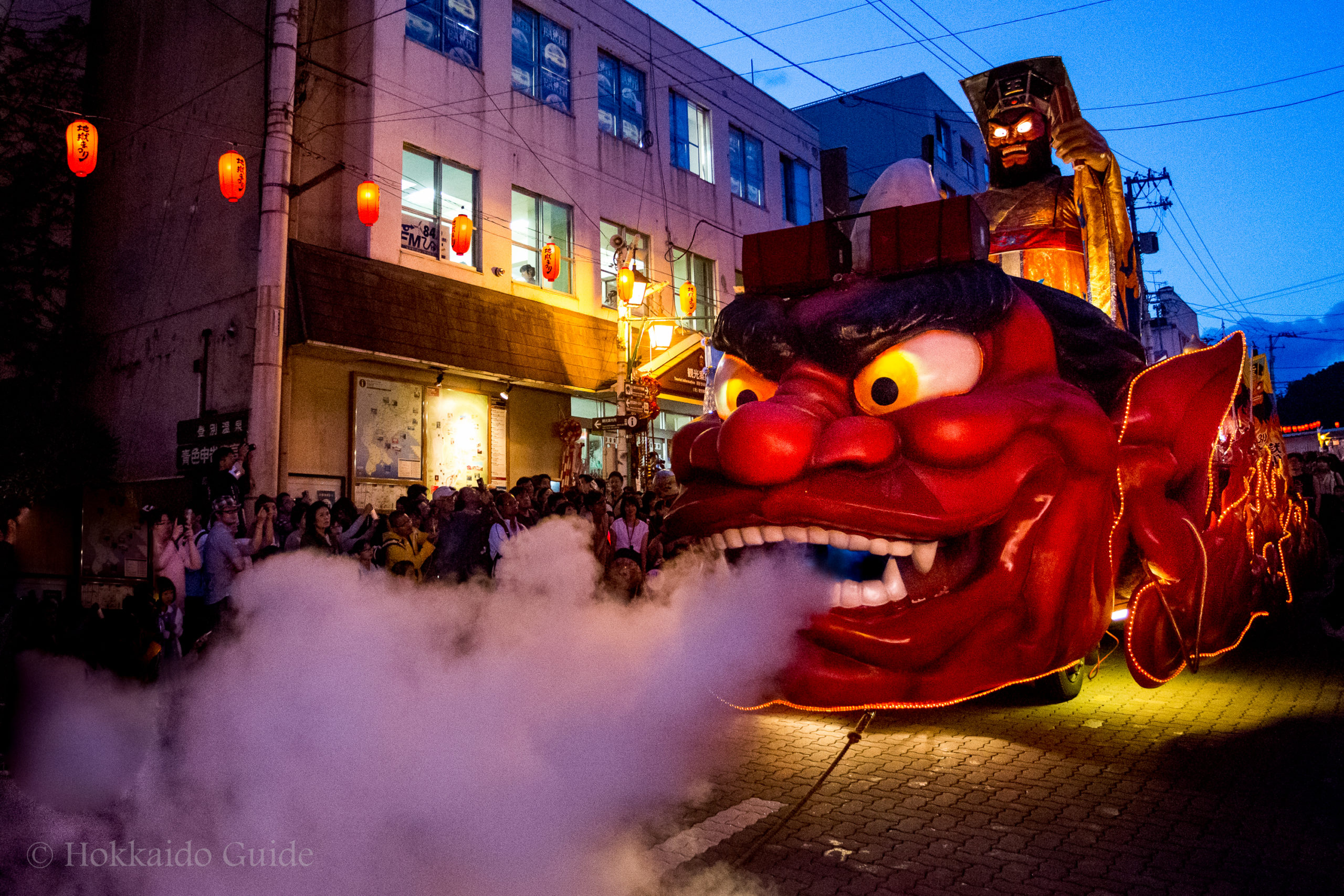
Jigoku Festival (Hell Festival)
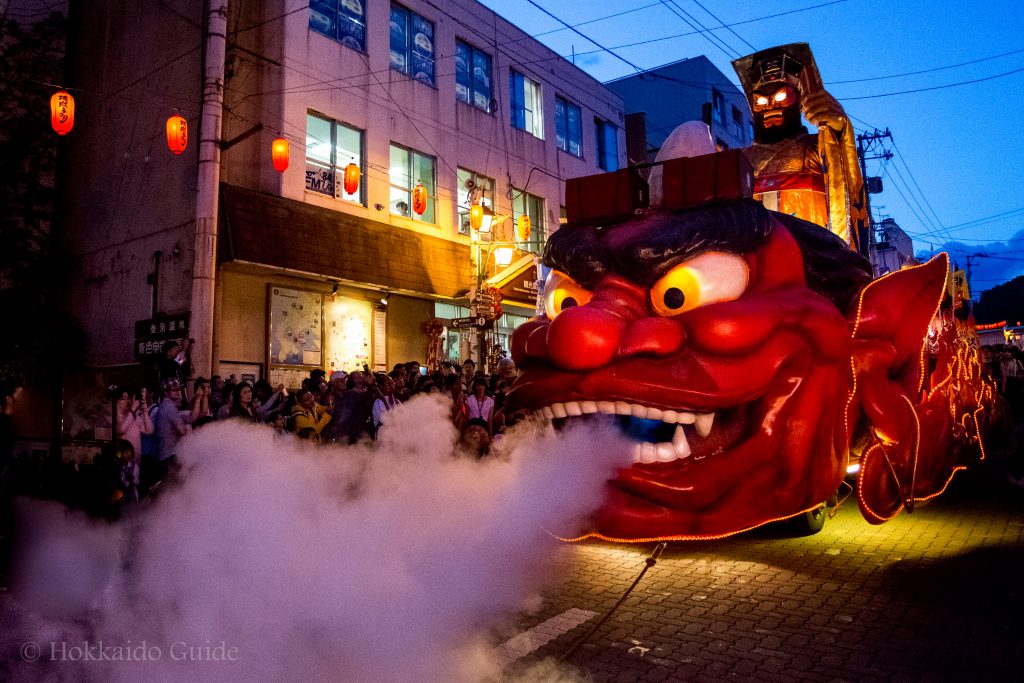
| Dates | Last weekend of August |
| Contact | phone 0143-84-3311 |
| Notes | Free parking available Demon floats Taiko performance Demon costume parade Fireworks To stay overnight at Noboribetsu onsen , book early. |
| Location / Getting There | 15 minute bus ride from JR Noboribetsu station 1 hour 30 minute drive from Sapporo |
“Yukijin” masked demon
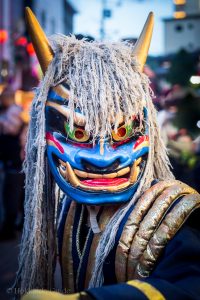
[the_ad id=”4264″]
The iconic center piece of this festival is the giant Demon Mikoshi Gokuraku (shrine) which is a giant demon face upon which stands the demon king. As it proceeds down the street, smoke pours from its mouth and the eyes light up, as it spews forth golden ribbons. A truly impressive sight! Ogre shrines of ‘Enma’ precede the demon shrine and are carried by school kids. Masked ogres dance in groups in honour of the demon king’s visit and local folks perform for the crowds. A colorful fireworks show on the final night, bids the demon king’s farewell until the following year.
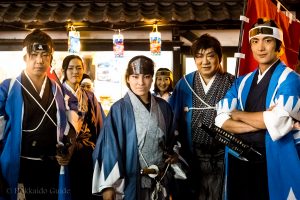 The locals really get involved with this festival. There is a huge dance parade in the evening, not only for the locals but for the spectators to join in as well! If you can’t make it, you can still have a demonic encounter at the Demon’s Fireworks ceremony, which is held at Jigokudani Observatory every Thursday and Friday from 20:30. Masked demons carry handheld fireworks – 10-metre high erupting columns of fire reminiscent of Hell Valley’s erupting steam vents and geysers – along the town’s demon footpath.
The locals really get involved with this festival. There is a huge dance parade in the evening, not only for the locals but for the spectators to join in as well! If you can’t make it, you can still have a demonic encounter at the Demon’s Fireworks ceremony, which is held at Jigokudani Observatory every Thursday and Friday from 20:30. Masked demons carry handheld fireworks – 10-metre high erupting columns of fire reminiscent of Hell Valley’s erupting steam vents and geysers – along the town’s demon footpath.
To get to the festival, you can take the JR train to Noboribetsu. From there it’s a short bus ride to Noboribetsu hot spring. It’s about a 15 minute ride and costs ¥340. Buses run every 15 to 20 minutes, starting at 6:10 and run until 21:15. Trains from Sapporo to Noboribetsu take just over an hour and cost ¥4160 for a round trip. Trains from Sapporo run from 6:36 to 22:00. Trains from Noboribetsu to Sapporo run from 7:26 to 21:47. If you have access to transport, then it’s about a one and a half hour drive. Free parking is available.
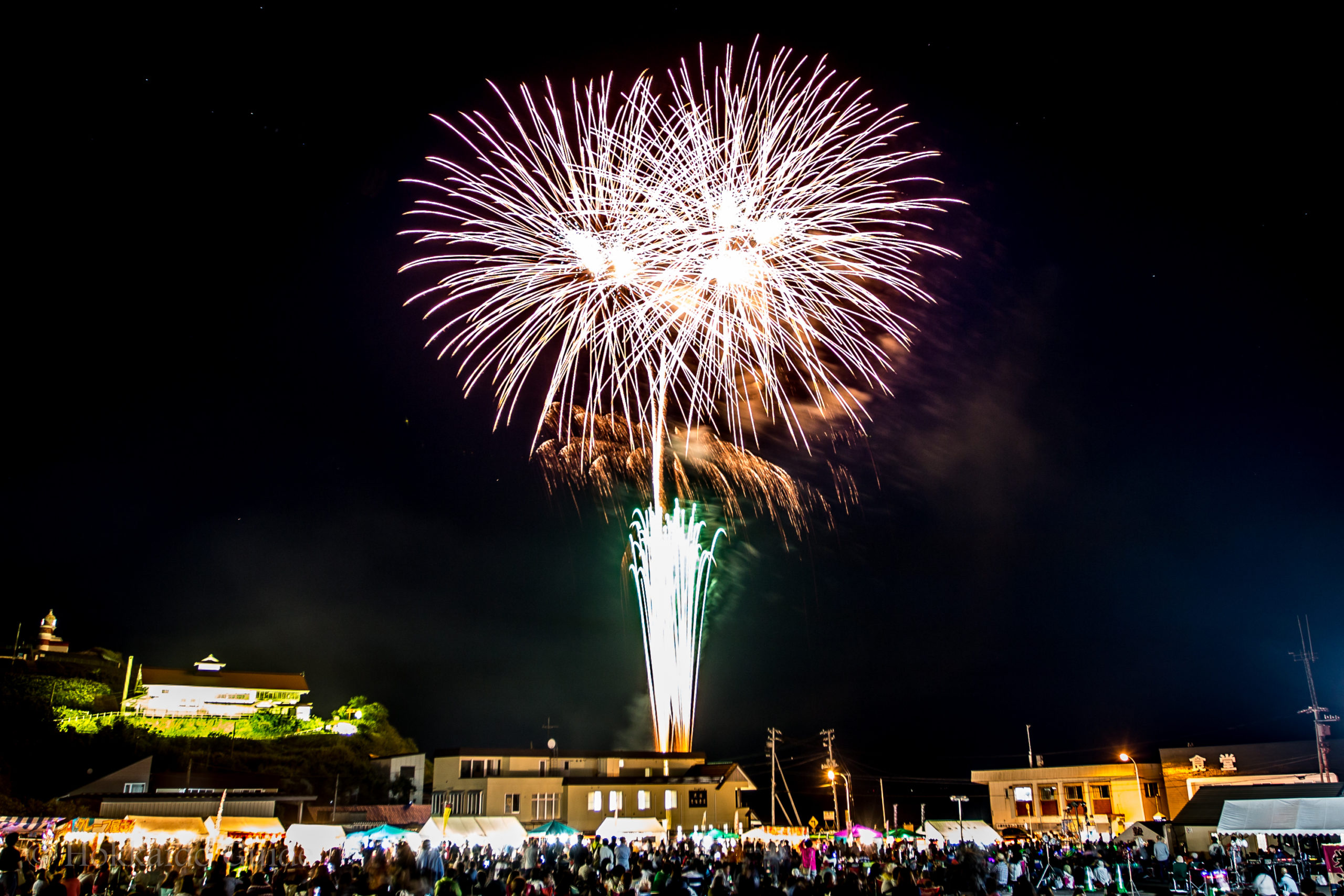
Otaru Shukutsu Festival
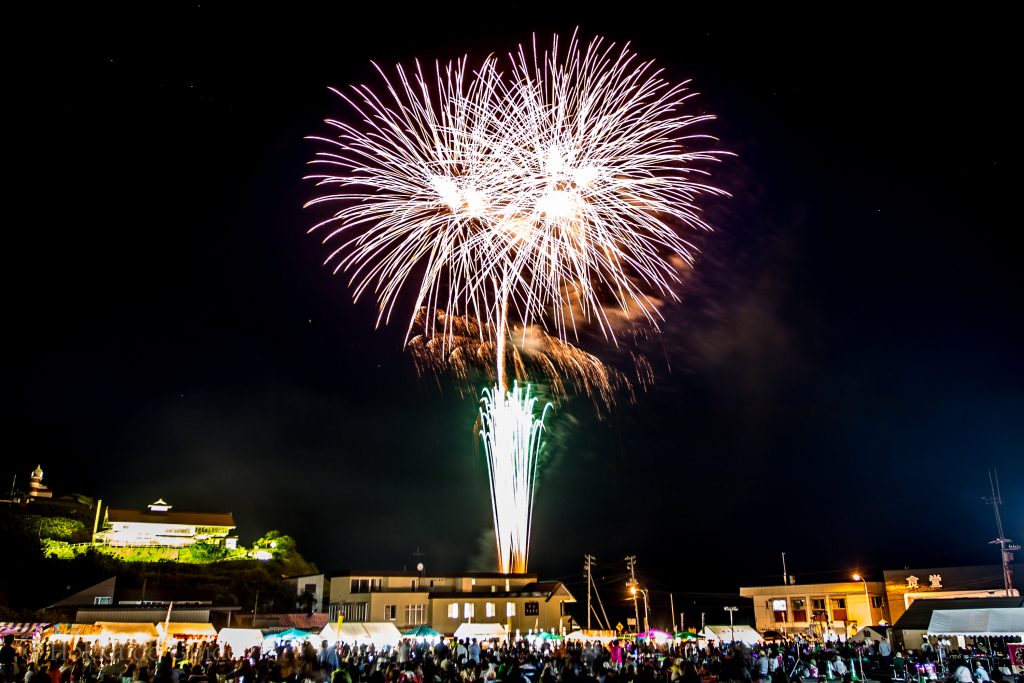
| Dates | 1st weekend of September |
| Contact | phone 0134-26-6160 mobile 080-4505-2424 |
| Notes | Free parking available (from 5pm) Fire works start around 7pm Food, live music, & taiko drums |
| Location / Getting There | Access by bus, take the train to Otaru station, then take the Otaru Aquarium bus. A taxi will cost around ¥3000 from Otaru station |
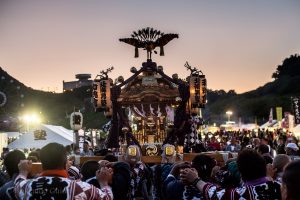 Otaru has many festivals over the year, and the Otaru Shukutsu Festival is one of the last festivals to see fireworks for the summer. The festival starts off at 5pm and attracts many of the locals and there is a lot to see.There is a “mikoshi” (portable shrine), taiko drum performance, live music, plus there are plenty of food stalls and of course, the fireworks which start at 7pm! All of this takes place below a meiji period house/museum, the ‘Otaru Nishin Goten’, which makes a fantastic backdrop for this festival!
Otaru has many festivals over the year, and the Otaru Shukutsu Festival is one of the last festivals to see fireworks for the summer. The festival starts off at 5pm and attracts many of the locals and there is a lot to see.There is a “mikoshi” (portable shrine), taiko drum performance, live music, plus there are plenty of food stalls and of course, the fireworks which start at 7pm! All of this takes place below a meiji period house/museum, the ‘Otaru Nishin Goten’, which makes a fantastic backdrop for this festival!
[the_ad id=”4264″]
At the start of the festival a portable shrine (mikoshi) is carried in by a large group of participants. These group of shrine bearers get together every year, and are from Sapporo and a few outlying towns. Chanting and singing to the rhythm the shrine is slowly brought into the festival. Once the shrine is in the festival it is placed in front of a dozen Taiko performers hitting the drums in time with the chanting. The drums with the shrine gives this festival a great Japanese atmosphere!
Fireworks over Otaru Nishin Goten
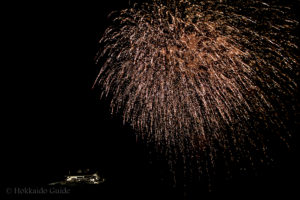

Ebetsu “Yakimonoichi” Ceramic Art Fair
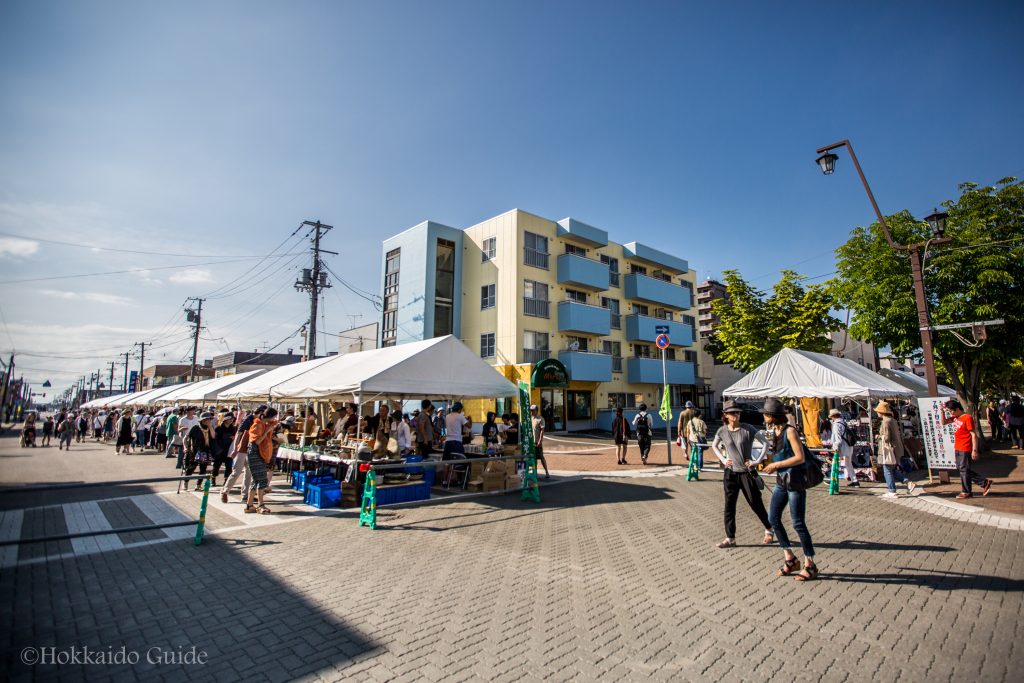
| Dates | 2nd weekend in July |
| Contact | 011-391-2160 ichi@yakimono21.org |
| Location / Getting There | 3 minute walk from JR Ebetsu Station. |
Just one of many stores

[the_ad id=”4264″]
The festival is relatively easy to find. Take the JR train to Ebetsu station. You will be able to see the fair from the station, just follow the crowds! If you are driving, there is only parking near the city hall which is a 10 minute walk away. The artists range from amateur to professional and there are thousands of ceramic items to choose from, whether it be some kitchenware or a small trinket to decorate the home. Prices, of course, vary depending on the artist. Don’t be afraid to barter a better price, as it’s all part of the fun!
The main event of the festival is the domino topple. About 2000 red bricks are set up on one of the streets and toppled over domino style! The festival ranges over half a dozen streets, so there are a lot of shops to see. In the summer heat there are plenty of places to sit and rest. As with all the festivals there are food stalls and vans set up to serve tasty lunches. Local food and more exotic curries are available. The Ebetsu Yakimonoichi Festival is a great place to buy some hand crafted ceramics, walk around, or to grab a beer and sit in the summer sun!
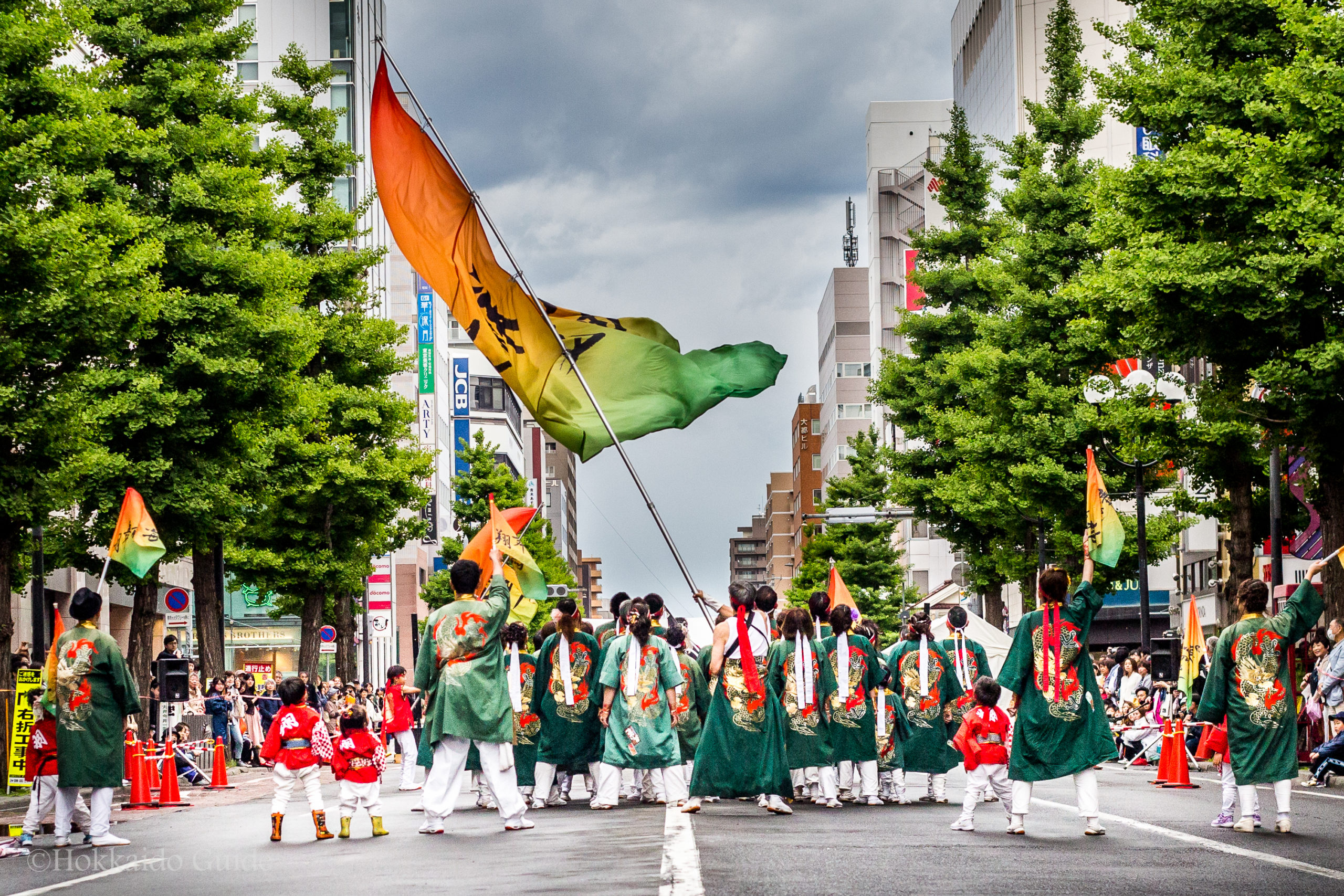
Yosakoi Soran Festival

| Dates | June 7th - June 11th |
| Contact | http://www.yosakoi-soran.jp 011-231-4351(YOSAKOI Soran Festival Organizing Committee) |
| Location / Getting There | Odori park, and surrounding areas throughout downtown Sapporo Take the subway to Odori station |
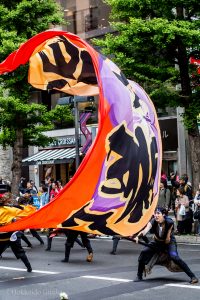 The Yosakoi Soran Festival is an energetic dancing event based on the Yosakoi Festival of Kochi Prefecture which was first held back in 1954. The style of dance is highly energetic, combining traditional Japanese dance movements with modern music. Yosakoi is performed all over Japan at festivals. Sapporo’s Yosakoi Soran Festival was first launched in 1992. The dances feature naruko clappers, colorful costumes and Hokkaido’s ‘Soran Bushi’ folk songs. From its origins of 10 teams with 1,000 dancers, it has bloomed into a major international event attracting some 30,000 dancers from within Japan and from abroad. Every year brings up to 20 million visitors. It runs for 4 days with the top teams performing in Odori park for the final.
The Yosakoi Soran Festival is an energetic dancing event based on the Yosakoi Festival of Kochi Prefecture which was first held back in 1954. The style of dance is highly energetic, combining traditional Japanese dance movements with modern music. Yosakoi is performed all over Japan at festivals. Sapporo’s Yosakoi Soran Festival was first launched in 1992. The dances feature naruko clappers, colorful costumes and Hokkaido’s ‘Soran Bushi’ folk songs. From its origins of 10 teams with 1,000 dancers, it has bloomed into a major international event attracting some 30,000 dancers from within Japan and from abroad. Every year brings up to 20 million visitors. It runs for 4 days with the top teams performing in Odori park for the final.
[the_ad id=”4264″]
Tireless performance
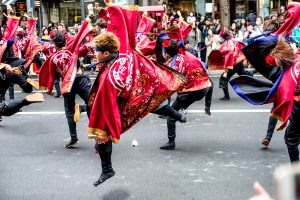
Performers with naruko
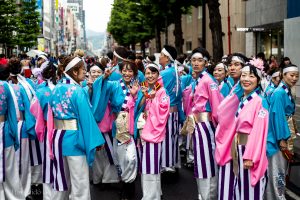
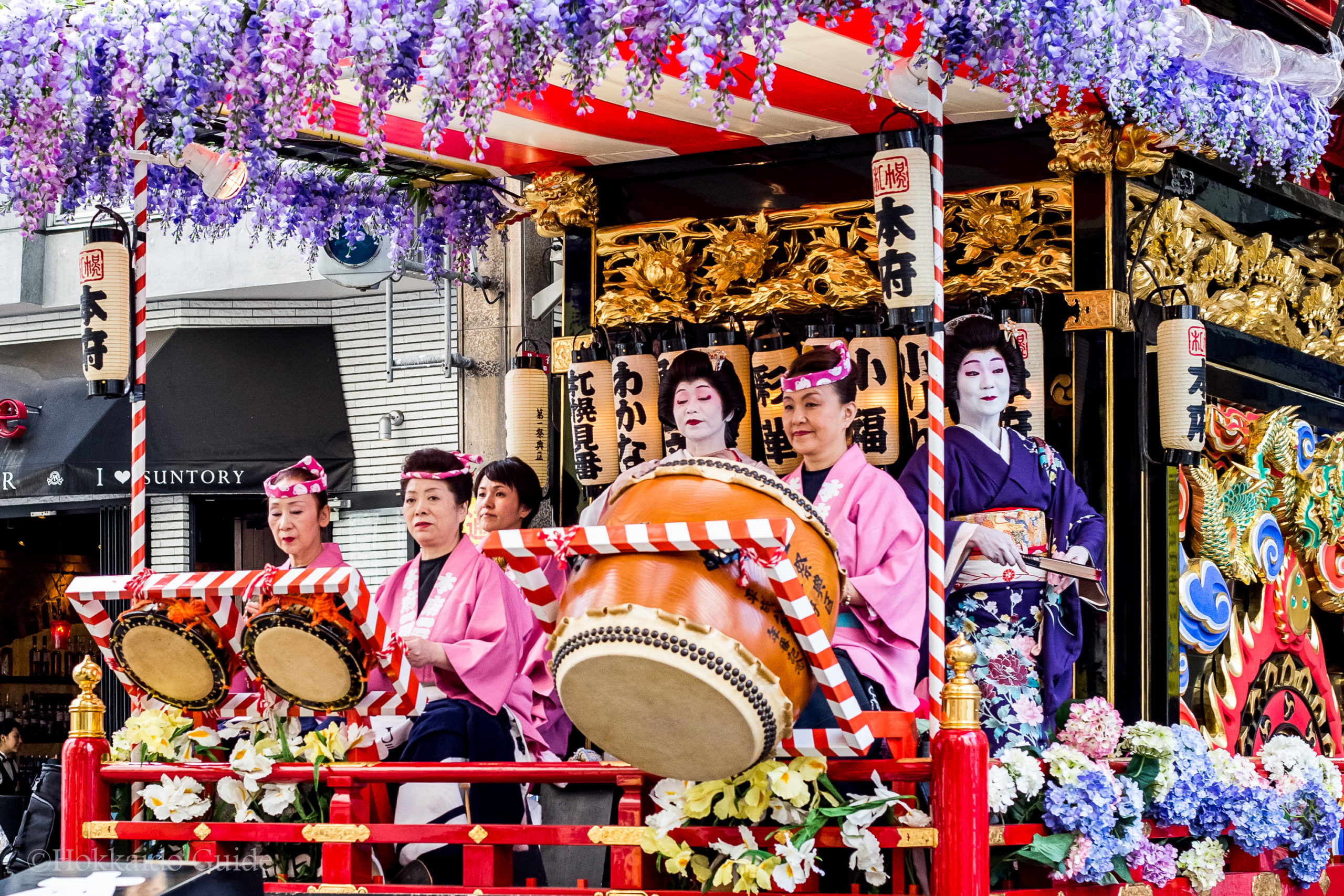
The Hokkaido Shrine Festival (Sapporo Festival)
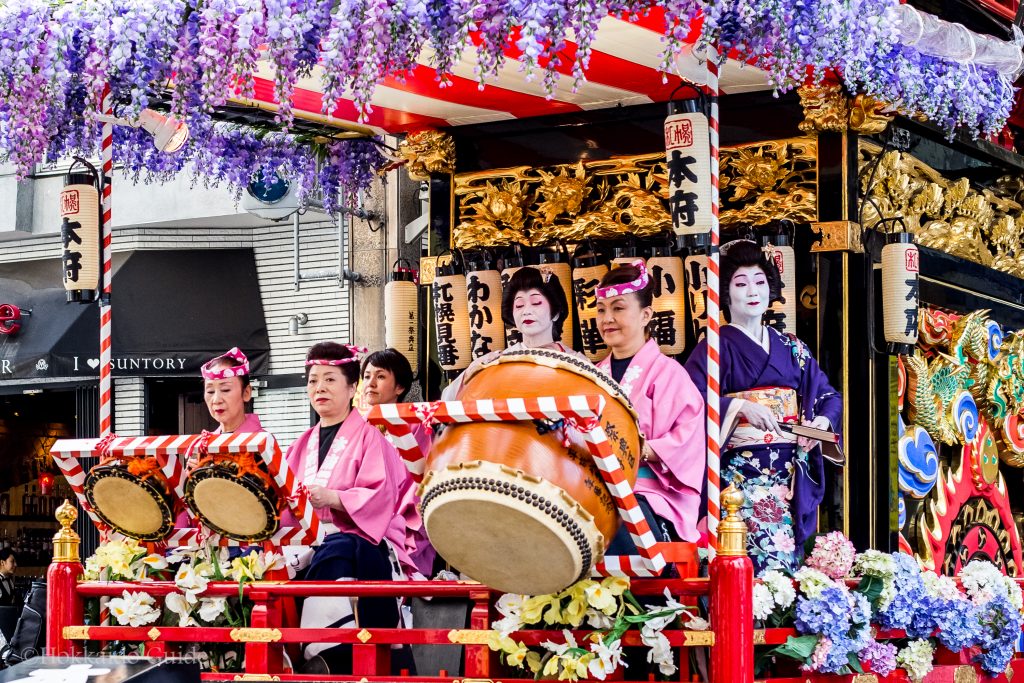
| Where | Hokkaido Shrine Nakajima Park |
| Dates | June 14th - June 17th |
| Contact | http://www.hokkaidojingu.or.jp 011-611-0261. |
| Location / Getting There | Hokkaido Shrine - take the subway to Maruyama station, it's a 10 minute walk to Hokkaido Shrine. The shrine is located in Maruyama park. Nakajima park - take the subway to Nakajima park station. Festival is located there. |
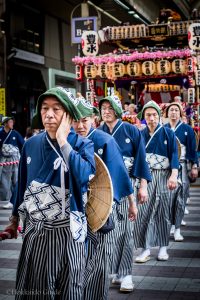 The Hokkaido Shrine Festival, also called the Sapporo Festival, has a history going back over a century. It is also one of the biggest festivals in Hokkaido. The festival runs from the 14th to the 16th of June. Stalls, entertainment and other attractions are set up through Nakajima park for those 3 days. Traditional dedication ceremonies are held at the shrine in Maruyama park, where many festival stalls are also set up. On the final day on the 16th, a huge parade sets out from Hokkaido Shrine and makes its way into the centre of Sapporo. The procession involves thousands of people dressed in colorful Heian period costumes. They wind their way through the city, so it is not hard to miss. Just follow the sound of the taiko drums. This really is a must see, a great Japanese experience!
The Hokkaido Shrine Festival, also called the Sapporo Festival, has a history going back over a century. It is also one of the biggest festivals in Hokkaido. The festival runs from the 14th to the 16th of June. Stalls, entertainment and other attractions are set up through Nakajima park for those 3 days. Traditional dedication ceremonies are held at the shrine in Maruyama park, where many festival stalls are also set up. On the final day on the 16th, a huge parade sets out from Hokkaido Shrine and makes its way into the centre of Sapporo. The procession involves thousands of people dressed in colorful Heian period costumes. They wind their way through the city, so it is not hard to miss. Just follow the sound of the taiko drums. This really is a must see, a great Japanese experience!
[the_ad id=”4264″]
 Nakaijima park is a popular place to head to for this festival. Many people dress up in their yukatas (light cotton kimonos) and head to the park. The festival here opens midday and closes by 10pm. There a rows and rows of stalls, selling local food, beer, drinks, sweets and even goldfish. Try your luck at the many game stalls set up, and try and win a toy or trinket. At the centre of the park, are a couple of fun ghost houses that you can enter. There is also a death defying motorbike event which is pretty interesting. Watch as a motorcyclist rides the walls of small circular room, blindfolded. There are also some jumping castles for the kids, and a magic house. Be warned though! In the evening, there are thousands upon thousands of people, and walking through the stalls can take a lot of time! It can get very crowded!
Nakaijima park is a popular place to head to for this festival. Many people dress up in their yukatas (light cotton kimonos) and head to the park. The festival here opens midday and closes by 10pm. There a rows and rows of stalls, selling local food, beer, drinks, sweets and even goldfish. Try your luck at the many game stalls set up, and try and win a toy or trinket. At the centre of the park, are a couple of fun ghost houses that you can enter. There is also a death defying motorbike event which is pretty interesting. Watch as a motorcyclist rides the walls of small circular room, blindfolded. There are also some jumping castles for the kids, and a magic house. Be warned though! In the evening, there are thousands upon thousands of people, and walking through the stalls can take a lot of time! It can get very crowded!
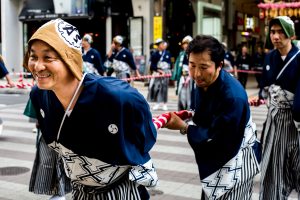 The highlight of the 3 day festival comes on the last day. Thousands of people in full costume leave in a long procession from Hokkaido Shrine. With drums, piccolos, and other instruments, this parade heads into the centre of Sapporo and makes its way back. The floats and portable shrines leave from Hokkaido shrine at around 8 am. It is a full day affair. The procession usually arrives into central Sapporo around early afternoon. Along with the procession there are 4 large mikoshi portable shrines that are carried by hundreds of locals, and 8 floats. The costumes are Heian period (794 to 1185 ad) and are very colorful and beautiful. Thousands of onlookers line the street and there are plenty of cameras around to capture this great spectacle. Definitely, mark this one down on your schedule if you are in and around Sapporo!
The highlight of the 3 day festival comes on the last day. Thousands of people in full costume leave in a long procession from Hokkaido Shrine. With drums, piccolos, and other instruments, this parade heads into the centre of Sapporo and makes its way back. The floats and portable shrines leave from Hokkaido shrine at around 8 am. It is a full day affair. The procession usually arrives into central Sapporo around early afternoon. Along with the procession there are 4 large mikoshi portable shrines that are carried by hundreds of locals, and 8 floats. The costumes are Heian period (794 to 1185 ad) and are very colorful and beautiful. Thousands of onlookers line the street and there are plenty of cameras around to capture this great spectacle. Definitely, mark this one down on your schedule if you are in and around Sapporo!

